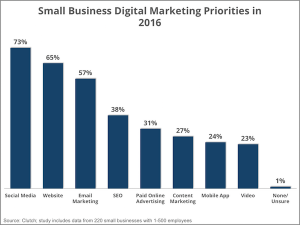— August 18, 2017

StockSnap / Pixabay
How measuring personalization based on ARPU makes it easy to prove and boost ROI
For all the complexity around conducting business online, the formula for success has changed little since a balding hedge fund manager drove to Seattle in search of a better way to sell books.
Increase website traffic + increase average revenue per user (ARPU) = $ $ $ $
While commonly thought of as an eCommerce metric, ARPU is an unbelievably valuable indicator across industries. Much of Facebook’s stunning ascension to Wall Street darling derives from the fact that they grew ARPU by nearly 75% in 2016 to nearly $ 20! Having 2 billion monthly active users is cool. But collecting a fresh Andrew Jackson from each of them is cold cash.
In this post, we’ll highlight ARPU insights based on thousands of transactions and explain how to build personalization strategies designed to increase the value of each click to your website.
The Conversion Rate Fallacy
When it comes to personalization metrics, conversion rate is by far the most common red herring. Again and again, we are asked how personalization can boost conversion rate without any context behind the importance of that KPI.
It turns out that there is a very easy way to boost your conversion rate. Simply hop into your e-commerce platform, cut prices by 80% across the board and be watch the sales start rolling in. Just be sure to dodge your CFO on the way out.
Proving the ROI of personalization is never about increasing a single metric. The key is thinking about all elements of your conversion funnel that impact the bottom line and understanding how personalization can drive incremental increases in each.
E-commerce ROI is a balancing act influenced by acquisition costs, conversion rates, average order values and a litany of secondary metrics such as margin, customer lifetime value, and return rate.The goal is to deliver superior experiences that drive small upticks across the board, ultimately leading to big-time revenue growth.
Average revenue per user stands out because it is a compound metric impacted by increases in conversion rate, onsite engagement, and basket size. For this reason, we recommend zeroing in on ARPU when trying to understand where personalization can drive maximum revenue impact.
What Studying ARPU Teaches Us
Above all else, ARPU is valuable because it provides direct insight into which website actions ultimately translate into dollars. While revenue-based attribution is far more complex than simply measuring conversions or clicks, the insights ultimately provided are invaluable for focusing on personalization use cases that will drive measurable ROI.
For example, our analysis of hundreds of thousands of North American eCommerce sessions powered by Dynamic Yield shows that for one of our enterprise retail customers, there is an interesting relationship between product detail pages (PDPs) viewed and ARPU. Users who view two PDPs over the course of their buyer journey spend almost exactly 2X on average as those who view only one.
Hence, by coaxing a user to click on a second PDP, you’ve essentially doubled the value of this website visitor’s encounter with your website! At three PDP’s viewed the ARPU increases an additional 50%! After three PDP’s viewed, each additional PDP click drives heavily diminished marginal return.
So what can a marketer do with this information in regards to personalization?
Using this data, create an audience segment for users who have viewed a single PDP and build an experience designed around product discoverability. Perhaps that means dedicating additional screen space to recommendations for these visitors, A/B testing a people also viewed vs. an affinity based strategy. Maybe it means moving product widgets above the fold on the homepage if this user returns to your website.
Meanwhile, for users who have viewed three or more product pages, deploy an experience designed to expedite checkout as it is likely they have assembled a hefty basket that you don’t want to see abandoned. After the third viewed PDP, trigger an overlay with a 15% coupon to increase your chance of collecting this bounty.
The Mythical Average User
ARPU data can often be hard to wrap your head around as it is heavily impacted by a “Super Pareto” principle. A $ 4 average from users who view one PDP is made up of thousands of sessions where users add nothing to their cart and thousands more where folks add items to cart but don’t complete a purchase. If we look at 100 hypothetical users, a $ 4 ARPU often breaks down to something like this:
- 95 users who spend $ 0
- 4 users who spend $ 25
- 1 user who spends $ 300
Thus, it’s essential to understand that we focus on ARPU not to try and personalize experiences for a mythical average user but to identify high-impact audience segments to focus personalization efforts on. By crafting a personalization strategy designed to increase ARPU, you’ll deliver engaging experiences to your most valuable visitors and have a concrete revenue uplift to reward your efforts.
This post first appeared on the Dynamic Yield blog.
Digital & Social Articles on Business 2 Community
(67)







